Diamond and morganite, two stunning gemstones, carry their own unique traits. On one hand, we have diamonds, the hardest known mineral. Morganite, on the other hand, is admired for its subtle warm hues and affordability.
We’ll explore the physical properties that differentiate diamonds vs morganite, including their color and hardness. We’ll also delve into their similarities, such as their lack of magnetism.
From the sparkling depths of the diamond to the peachy elegance of morganite, we’ll be covering a lot of ground.
Whether you’re choosing a gemstone for a piece of jewelry, adding a new mineral to your collection, or just mining for knowledge, this comparison will give you a deeper understanding of these two beautiful gems.
Diamond vs Morganite – The Major Differences
Though diamonds and morganite are dazzling in their own ways, they differ in characteristics like color, hardness, and price. Let’s dive into these differences and learn what makes each of these gemstones stand out.
Appearance – Diamonds can be transparent, translucent, or opaque
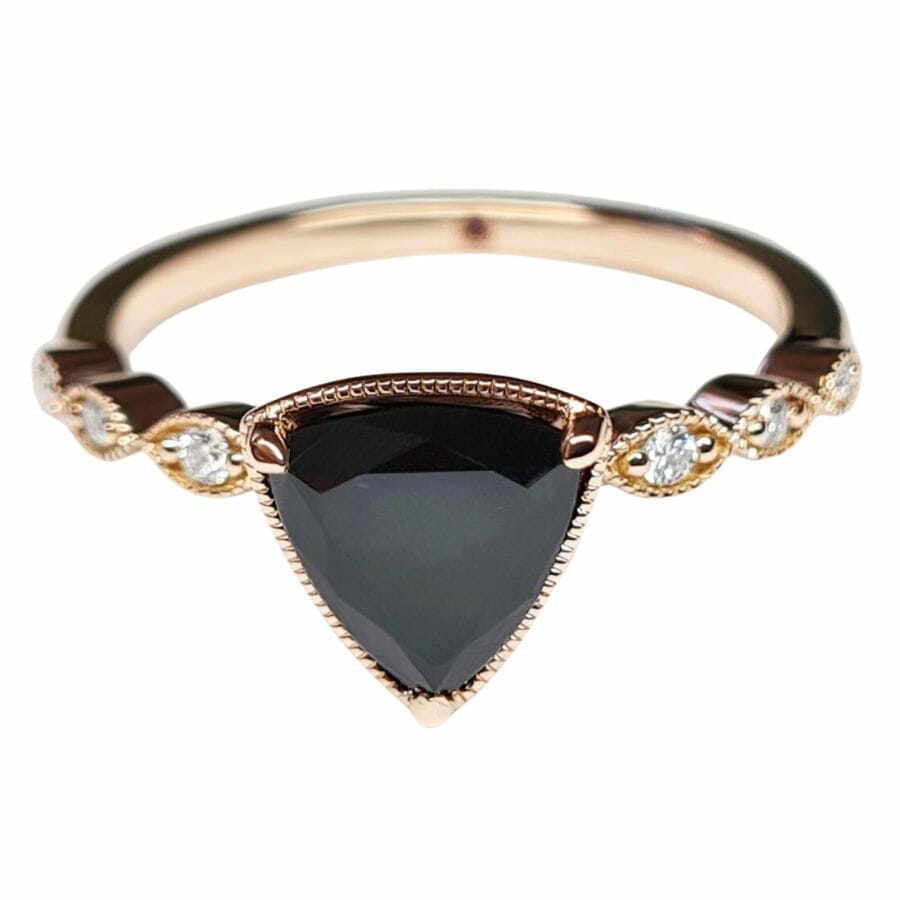
If you look closely, you’ll see a pretty noticeable difference between diamonds and morganite.
Diamonds can have different levels of transparency. This means some diamonds let light pass through without any trouble, while others only allow some light to go through, and others don’t let light pass through at all.
The amount of light that can pass through depends on how pure the diamond is. The purest, top-quality diamonds are totally transparent. Other diamonds might be translucent or even opaque, especially the ones used for industrial purposes, not for jewelry.
On the flip side, morganite has a different look. These gemstones are usually either transparent or translucent. The most prized morganite gems are the transparent ones because they let light pass through completely.
But, some morganite gems can be translucent if they have tiny particles, called inclusions, inside them. It’s really rare to find a morganite gem that’s opaque, which means it doesn’t let light pass through at all.
Colors – Morganite always comes in peach-pink colors
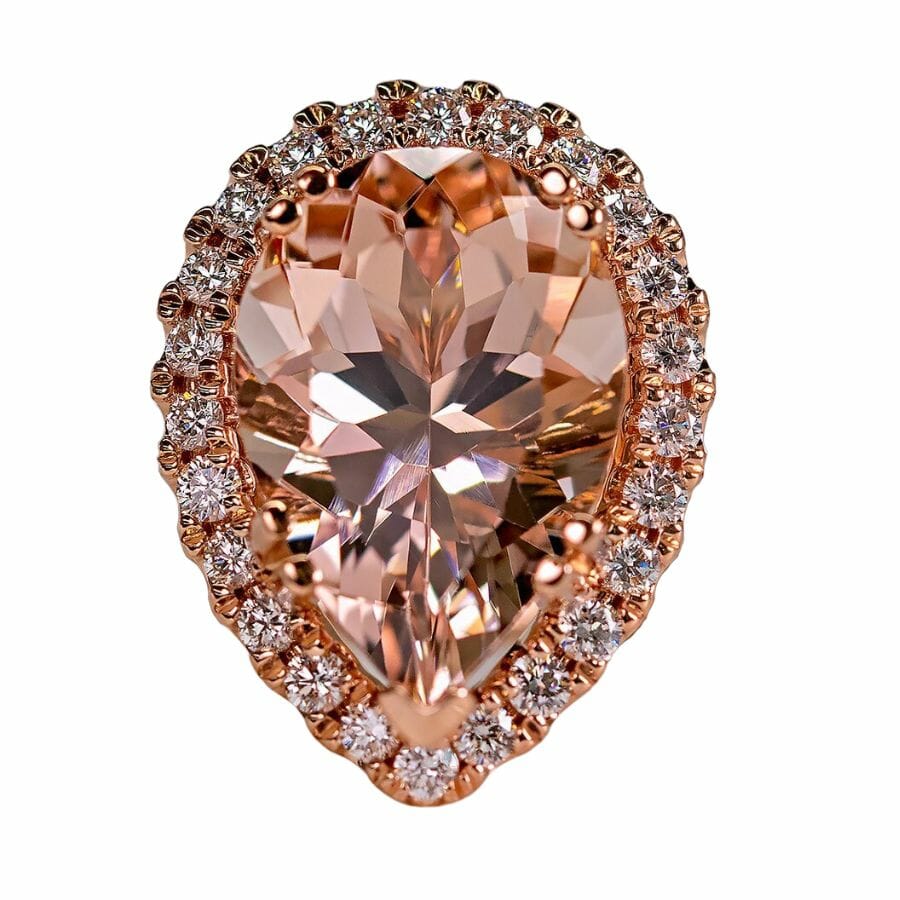
Diamonds and morganite are both pretty cool because they can come in different colors. When you think of a diamond, you might picture a clear, sparkly stone. But did you know diamonds can come in other colors too?
They can be yellow, blue, red, or green. These colors happen because of tiny bits of other elements that get stuck inside the diamond when it’s forming. Blue and red diamonds are prized because of their rarity.
Now, let’s talk about morganite. This gem is different from diamonds because it’s always some shade of pink or peach. It gets its color from small amounts of manganese or cesium in its crystal structure.
People really like the color of morganite because it’s soft and pretty and goes well with lots of different types of jewelry.
Luster – Diamonds have a brilliant sparkle
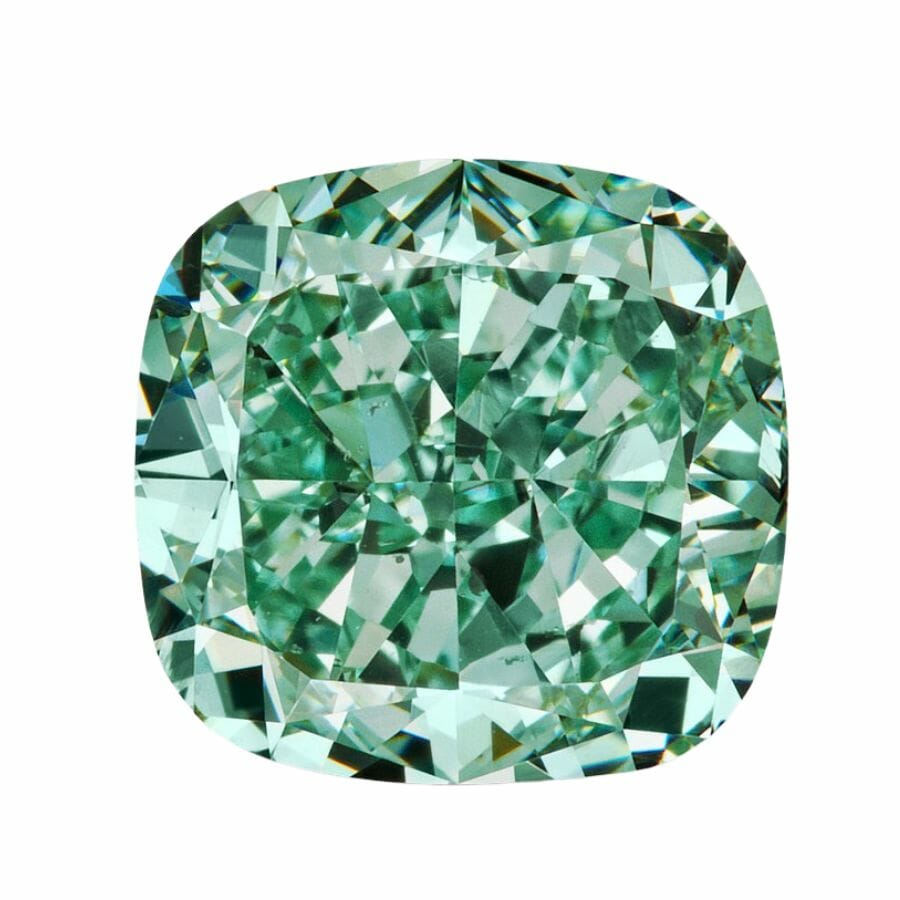
One of the things that makes diamonds and morganite different is how they shine.
You’ve probably noticed that diamonds sparkle a lot. That’s because diamonds have something called an adamantine luster. This means they have a very high refractive index, which is just a fancy way of saying they bend light in a way that creates a lot of brilliance.
When light hits a diamond, it bounces around inside, then comes back out in all directions, creating that amazing sparkle we all love.
Morganite, on the other hand, has a different kind of shine. It has what’s known as a “vitreous” luster. This means that morganite shines like glass when light hits it. It’s not as brilliant or sparkly as a diamond, but it still gives off a beautiful sheen.
Streak – Morganite has a white streak
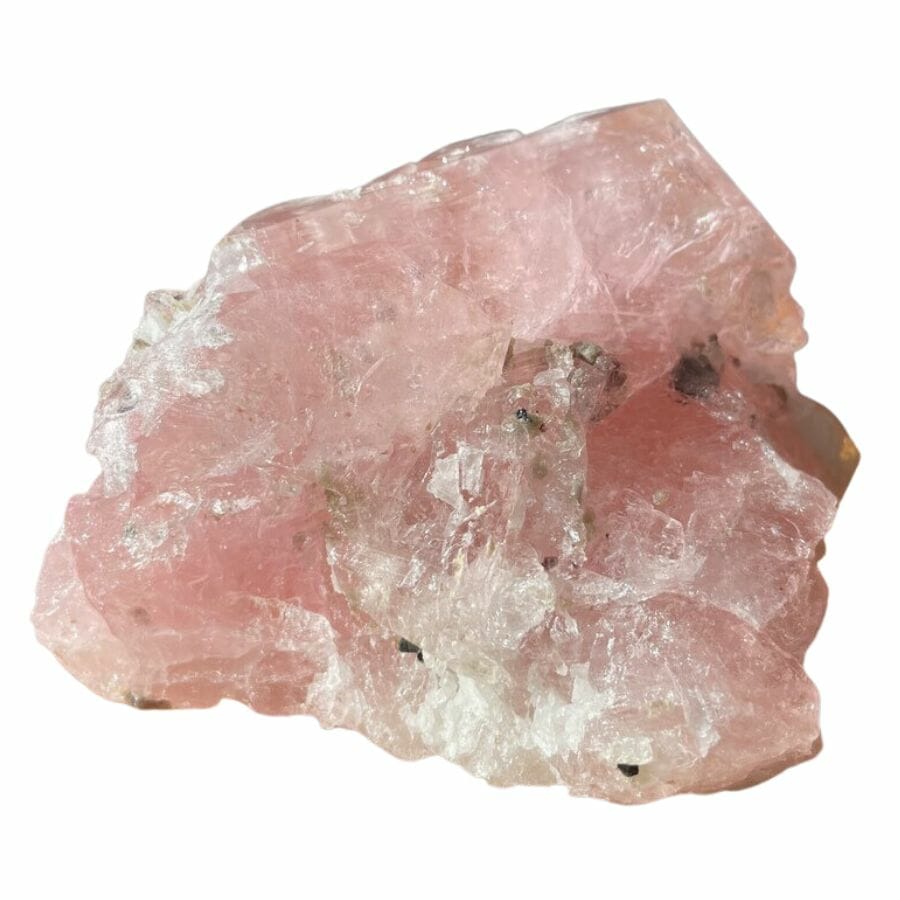
Gemstones have something called a “streak,” or the color of the line they leave when you scratch them against something rough, like an unglazed porcelain plate.
With diamonds, things are a bit tricky because diamonds are incredibly hard. In fact, they’re the hardest mineral we know of. Because of this, they don’t really get scratched by other things.
Instead, they do the scratching!
So, if you tried to see a diamond’s streak, you wouldn’t really see anything because it’s much harder than the streak plate. It’s like trying to write with a pencil that’s not sharpened – you won’t see any color, but you’ll see a scratch on the paper.
Morganite, though, is a different story. When you scratch morganite against a streak plate, it can leave behind a white streak. It’s a neat trick that all minerals in the beryl family, which includes morganite, can do.
Because of this, it can be easy to tell morganite vs diamonds just by their streak.
Hardness – Diamonds are the hardest known mineral on earth
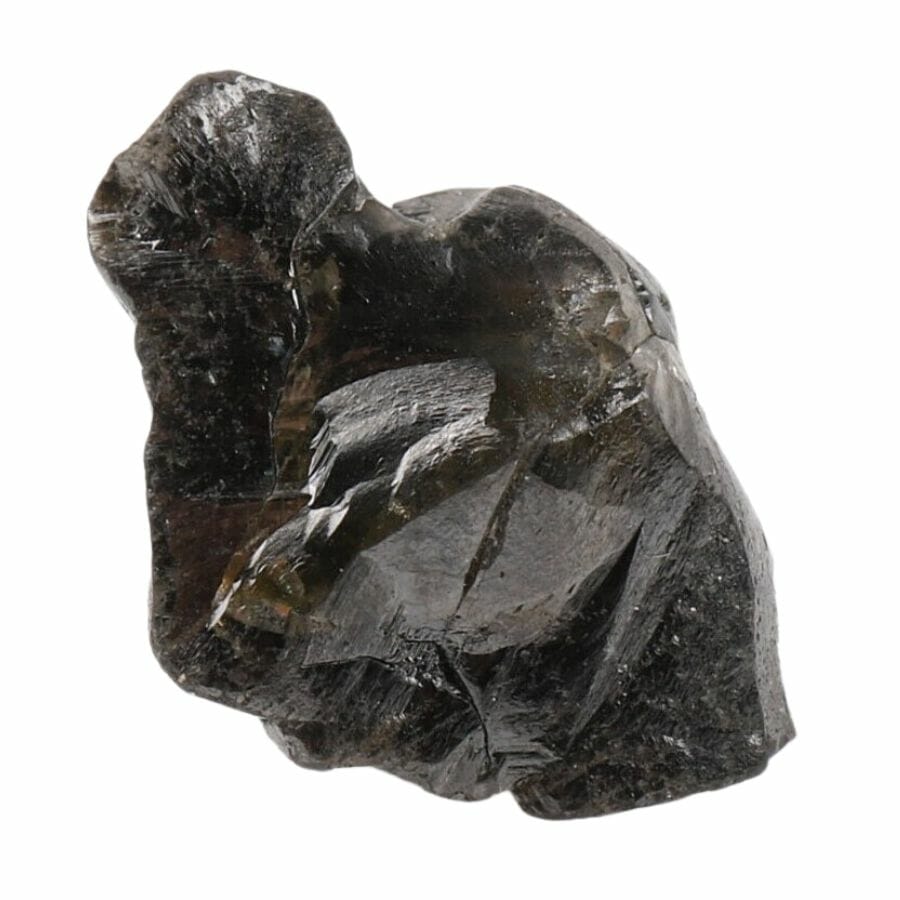
When you’re talking about diamonds and morganite, one thing that makes them different is their hardness.
Diamonds are super tough. They’re actually the hardest-known mineral on Earth! That’s why they get a perfect 10 out of 10 on the Mohs scale of hardness, a system that scientists use to measure how hard minerals are.
Being so hard means that diamonds are really good at resisting scratches and they can last a long time without getting damaged. That’s one of the reasons diamonds are a popular choice for jewelry that gets worn a lot, like engagement rings.
On the flip side, morganite isn’t as hard as diamond. Instead, it gets a 7.5 to 8 out of 10 on the Mohs scale. Even though it’s not as hard as diamond, morganite is still pretty tough. It’s harder than some other popular gemstones and can stand up to a fair amount of wear and tear.
But, if you’re really rough with it, morganite is more likely to get scratched than a diamond would.
Cleavage – Morganite is easier to cut
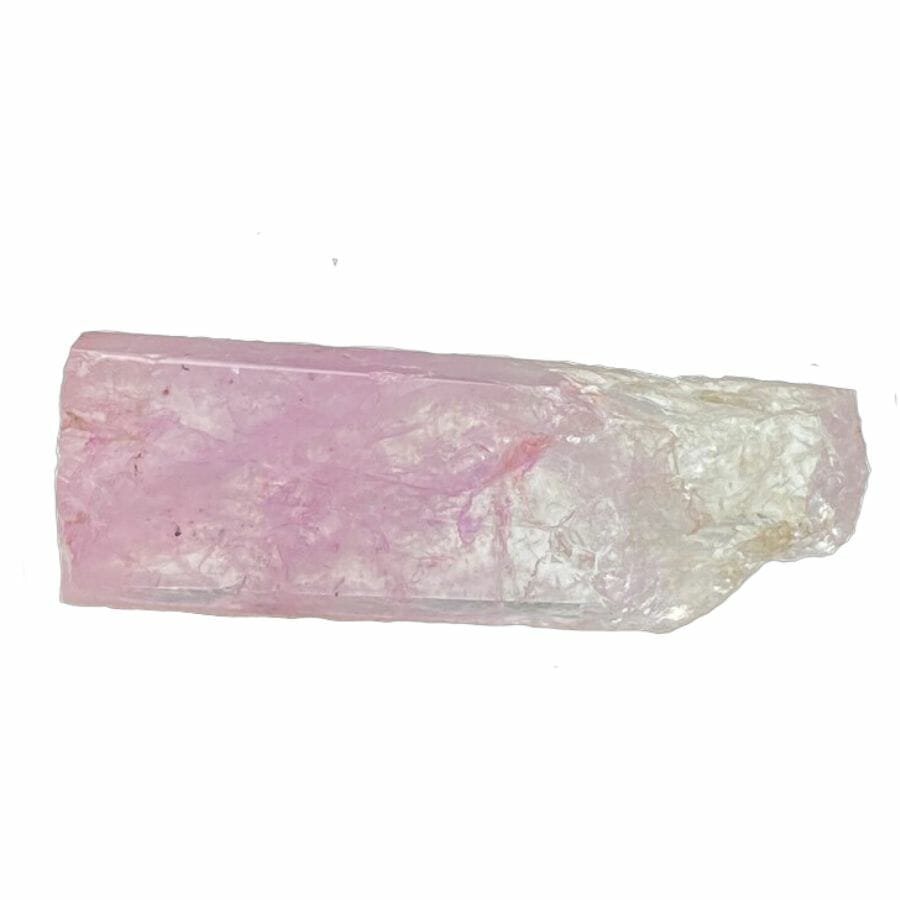
In the world of gemstones, cleavage refers to the way a mineral breaks or splits along certain lines or planes. Diamonds and morganite cleave in different ways.
First, diamonds cleave perfectly in four directions. It means they have natural lines where they can split more easily, and these lines go in four different directions.
That’s why diamond cutters have to be very careful. If they cut the diamond wrong, it could split apart. So, cutting a diamond is kind of like a very precise game of Operation.
Morganite, however, has what’s called imperfect basal cleavage. It doesn’t have a strong tendency to split in a certain direction. That makes morganite a bit easier to cut and shape into gemstones.
Chemical composition – Diamonds are made of just one element
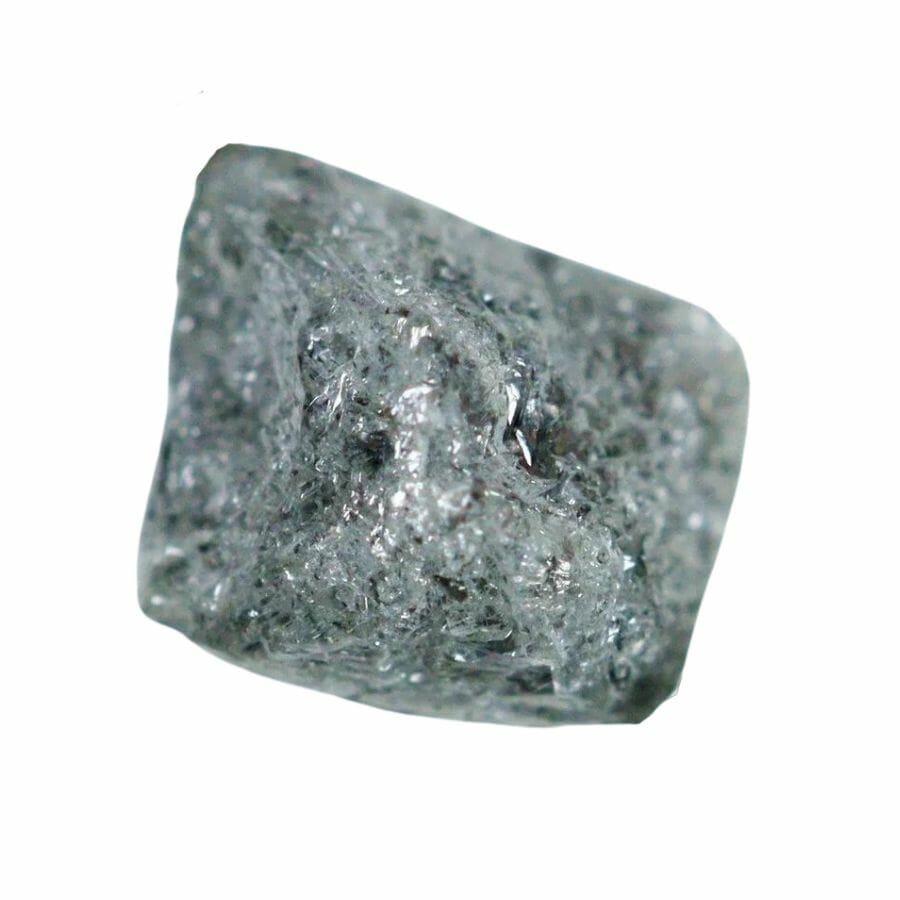
If you’ve ever seen a list of ingredients on a food package, you know that different things are made up of different stuff. Well, gemstones are the same way. Diamonds and morganite have different “ingredients,” or chemical compositions.
Diamonds are pretty simple when it comes to their chemical makeup. They’re made of just one element – carbon. But don’t let that simplicity fool you. Even though diamonds are made of just one thing, they’re formed under really extreme pressure and heat.
That’s what gives them their unique crystal structure and makes them so hard.
Morganite, on the other hand, is a bit more complex. It’s a variety of the mineral beryl, which means it’s made up of beryllium, aluminum, silicon, and oxygen. Pure beryl is usually clear and colorless, but morganite gets its beautiful pink color from small amounts of manganese in its structure.
Crystal structure – Morganite has six-sided crystals
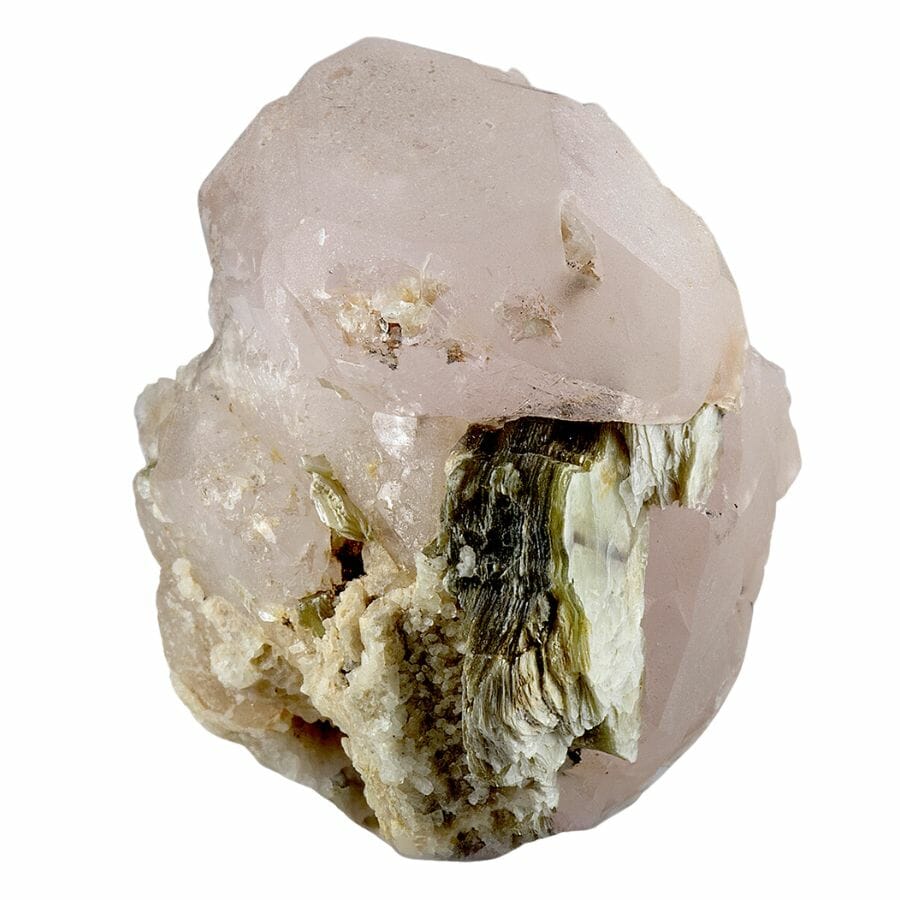
If you were to take a really, really close look at diamonds and morganite, you’d see that their atoms are arranged in different patterns. This arrangement is called the crystal structure, and it’s another thing that makes diamonds and morganite different from each other.
Diamonds have an isometric, or cubic, crystal system. That’s a fancy way of saying that each carbon atom inside a diamond is connected to four other carbon atoms in a shape like a pyramid.
This structure is super strong and it’s one of the things that makes diamonds so hard.
Now, let’s look at morganite. Morganite’s crystal structure is a bit different. It has a hexagonal, or six-sided, structure. Each beryl atom inside morganite is connected to six other atoms.
This isn’t as dense or strong as the structure in diamonds, but it’s still pretty cool!
Formation – Diamonds are found in rocks called kimberlite
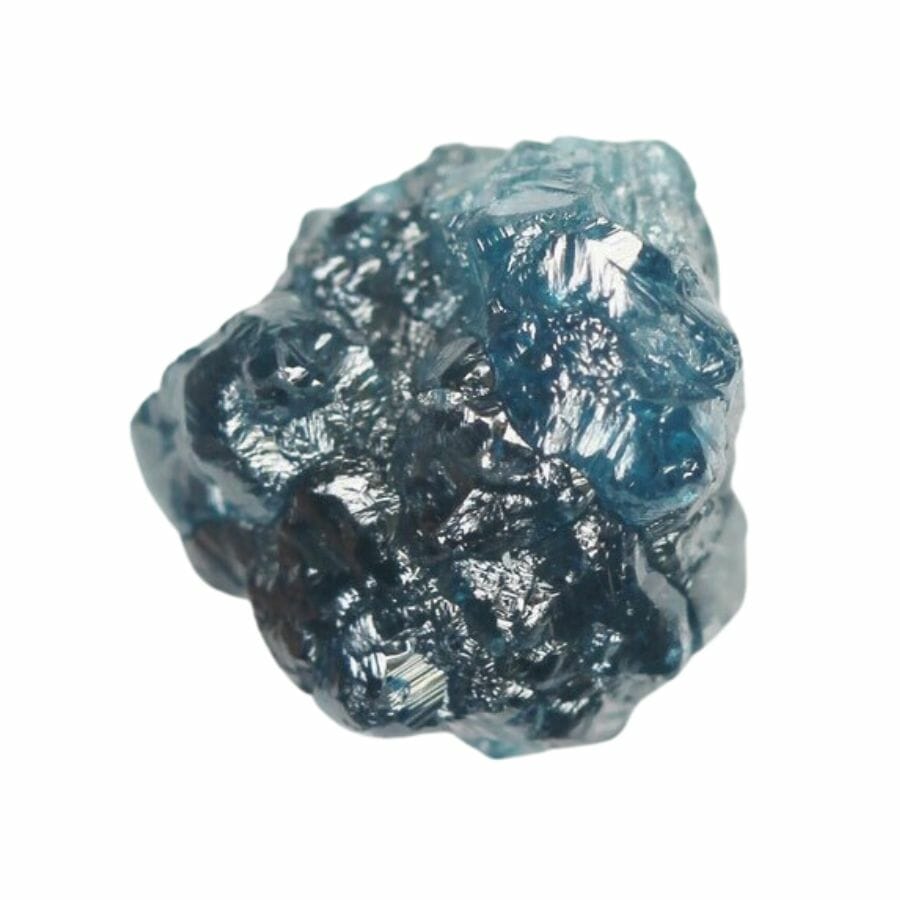
Have you ever wondered where diamonds and morganite come from? They form deep in the Earth over millions of years, but they don’t form in the same way or in the same places.
Diamonds come from really deep inside the Earth – we’re talking about 100 miles deep! They form under extreme pressure and heat in the Earth’s mantle, a layer of the Earth that’s below the crust we live on.
When volcanoes erupt, they can bring diamonds up to the Earth’s surface. That’s why diamonds are often found in a type of igneous rock called kimberlite, which is formed during volcanic eruptions.
Some of the best rockhounding locations for kimberlite include Brazil, Sierra Leone, South Africa, and more.
Morganite, on the other hand, is typically formed in something called pegmatites. These are a type of igneous rock that forms when lava or magma cools down and solidifies.
Pegmatites are really cool because they often have large crystals in them, including beautiful crystals of morganite.
Density – Morganite is less dense
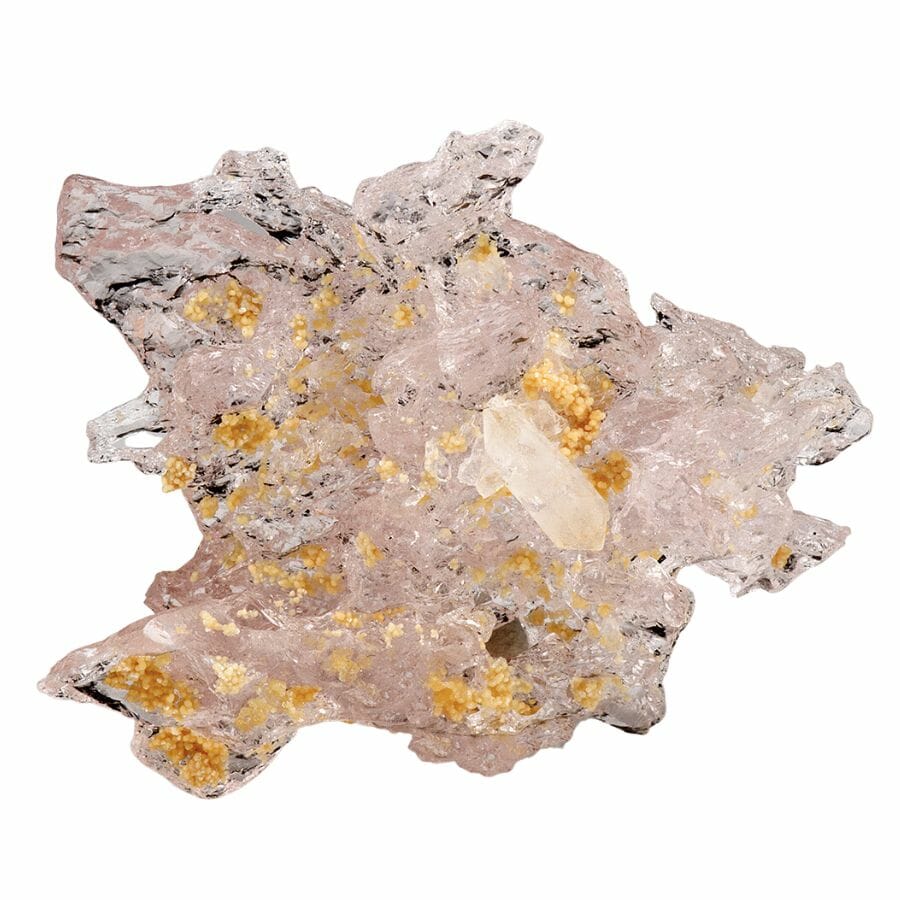
Picture this: you’re holding a diamond in one hand and a piece of morganite in the other. Even if they’re the same size, they wouldn’t feel the same. Why? Because they have different densities.
Density refers to the amount of matter that’s packed into a certain space. The density of diamonds is between 3.5 to 3.53 grams per cubic centimeter. That’s a lot of carbon atoms packed tightly together!
Because of this high density, a diamond feels heavy for its size. It’s one of the reasons why diamonds have that special, luxurious feel.
Now, if you were to hold a piece of morganite, it wouldn’t feel as heavy as the diamond. That’s because morganite has a lower density, somewhere between 2.71 to 2.9 grams per cubic centimeter.
So, even if you had a diamond and a piece of morganite that were the same size, the morganite would be lighter.
Fluorescence – Diamonds can glow in different colors
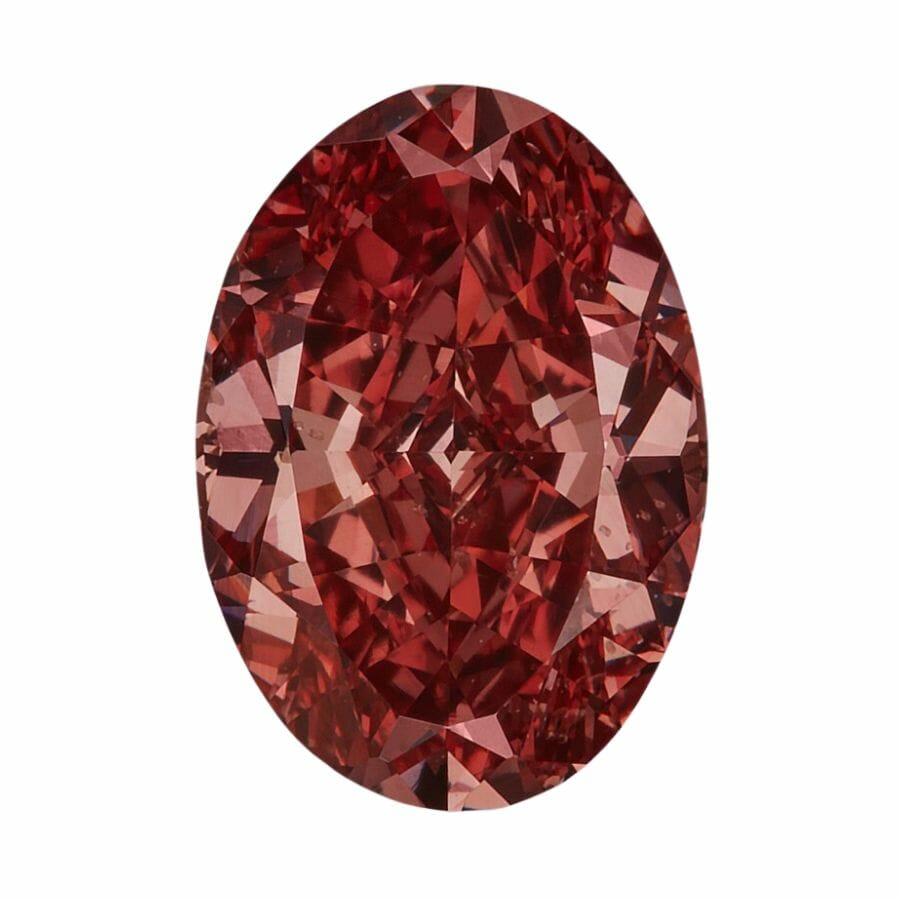
Imagine if some rocks could light up like a neon sign. Sounds pretty cool, right? Well, some gemstones, like diamonds and morganite, can actually glow under ultraviolet light. This is called fluorescence.
When you shine an ultraviolet light on diamonds, they can glow. The glow can range from no glow at all to a very strong glow.
The color of the glow can also change. Most often, the glow is blue. But sometimes, it can be orange, yellow, white, or green. Very rarely, the glow can be red or purple. This all depends on the specific diamond.
Now, let’s talk about morganite. When you shine an ultraviolet light on morganite, it typically glows a bright, intense red.
Price – Morganite is a lot more affordable
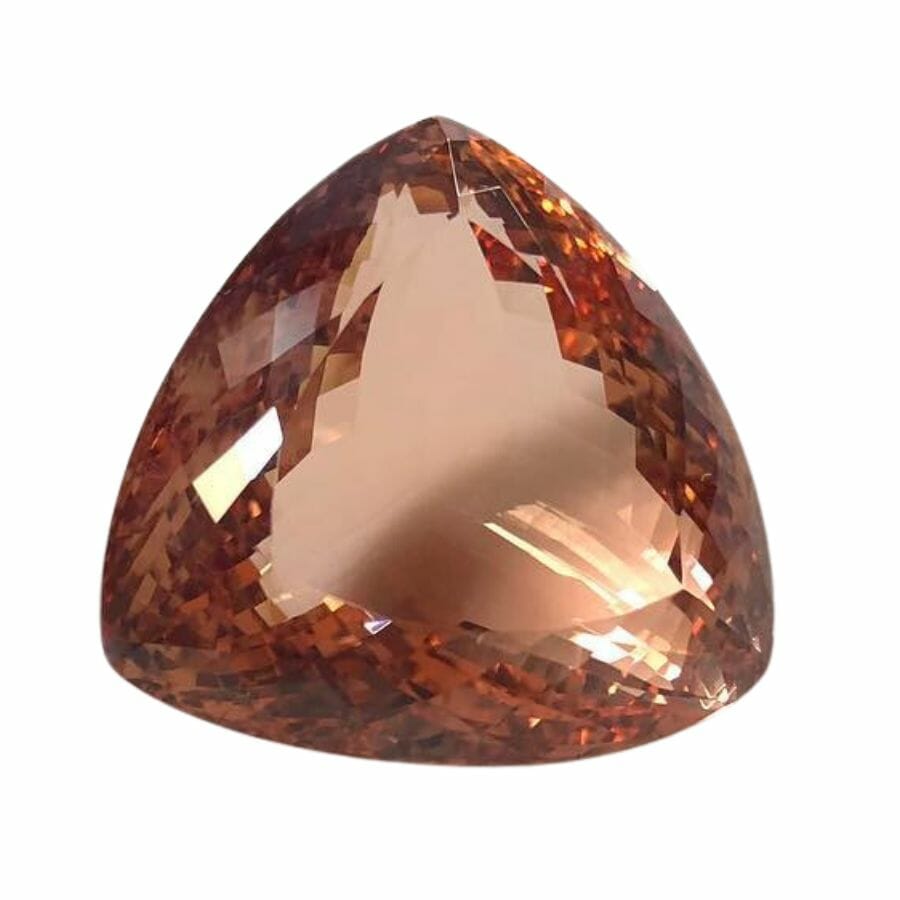
So, let’s talk about the differences in price between diamonds and morganite.
Diamonds are generally quite a bit more expensive than morganite. This is because diamonds are rarer, and lots of people want to buy them. Plus, getting diamonds out of the ground and then cutting them into gemstones can be pretty pricey.
The value of diamonds can change a lot too. It depends on what’s called the four C’s: carat, cut, color, and clarity.
Now, on the other hand, morganite is generally more affordable. This is one reason why a lot of folks like to use morganite in their jewelry.
But just like with diamonds, the price of morganite can change based on a few factors. These include how big the gemstone is, the intensity of its color, and its overall quality.
Location – The biggest diamond reserves are in Russia and Botswana
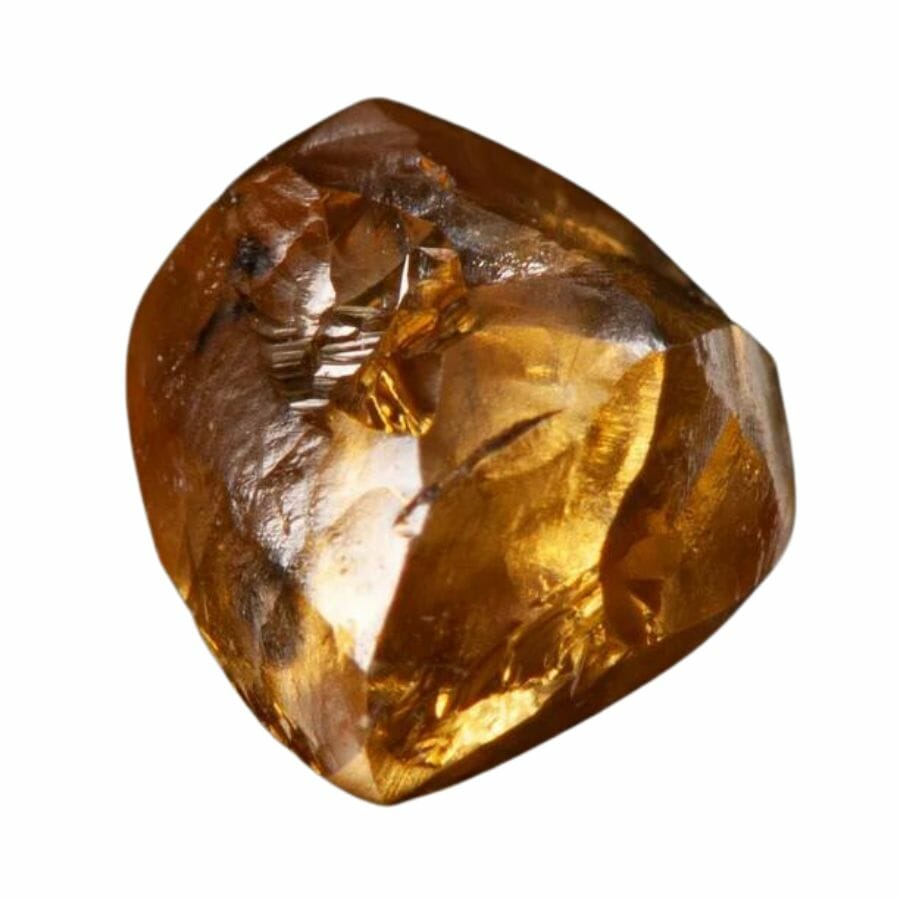
Diamonds and morganite, both sparkling and wonderful, are found in different corners of the world.
Let’s start with diamonds. These precious gems are found in many countries, but the places where you’ll find the most diamonds are Russia and Botswana. That’s not all, though! There are also a bunch of diamonds in Australia and Canada.
You can also go crystal hunting in the Crater of Diamonds Mine in Arkansas, the only active diamond mine in the US.
Now let’s talk about morganite. You’ll find this beautiful pink gemstone in several countries too. Some of these places are Afghanistan, Brazil, Madagascar, and even the United States. In the US, you’ll find morganite mostly in California and Maine.
But the place that produces the most morganite is Brazil.
Morganite vs Diamond – The Similarities
Diamonds and morganite have a lot of differences, but they share some interesting similarities. We’ll dig into these shared traits and uncover the fascinating commonalities between these two sparkling stones.
Magnetism – Both gems are non-magnetic
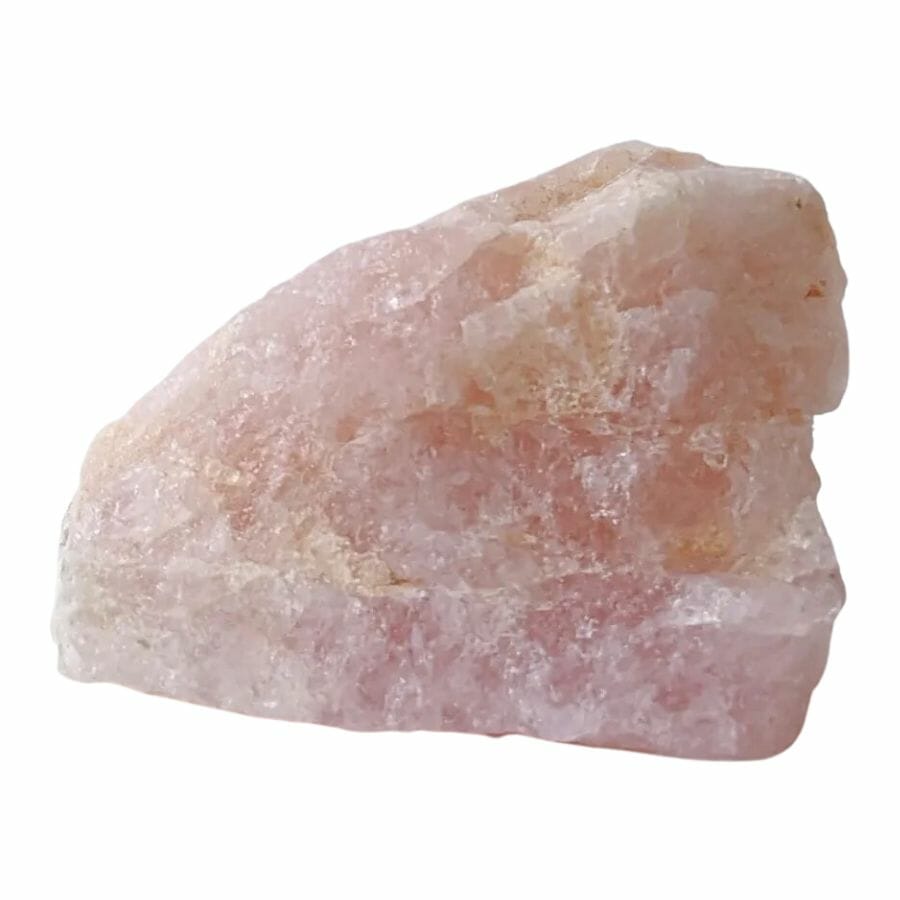
Magnetism is a force that pulls or pushes certain metals, like iron, towards or away from a magnet. You see it when fridge magnets stick to the door. It’s an invisible energy field created by moving electric charges.
Not everything is magnetic though. Things like plastic or glass won’t be able to stick to magnets.
If you were to take a diamond and hold it up to a magnet, nothing would happen. This is because diamonds are not magnetic, meaning they don’t get attracted to or interact with a magnet.
The same is true for morganite. Like diamonds, morganite isn’t attracted to or affected by magnets. So if you have a piece of morganite and you try to stick it to your fridge with just a magnet, it’s not going to stay up there.
Conductivity – They can’t conduct electricity
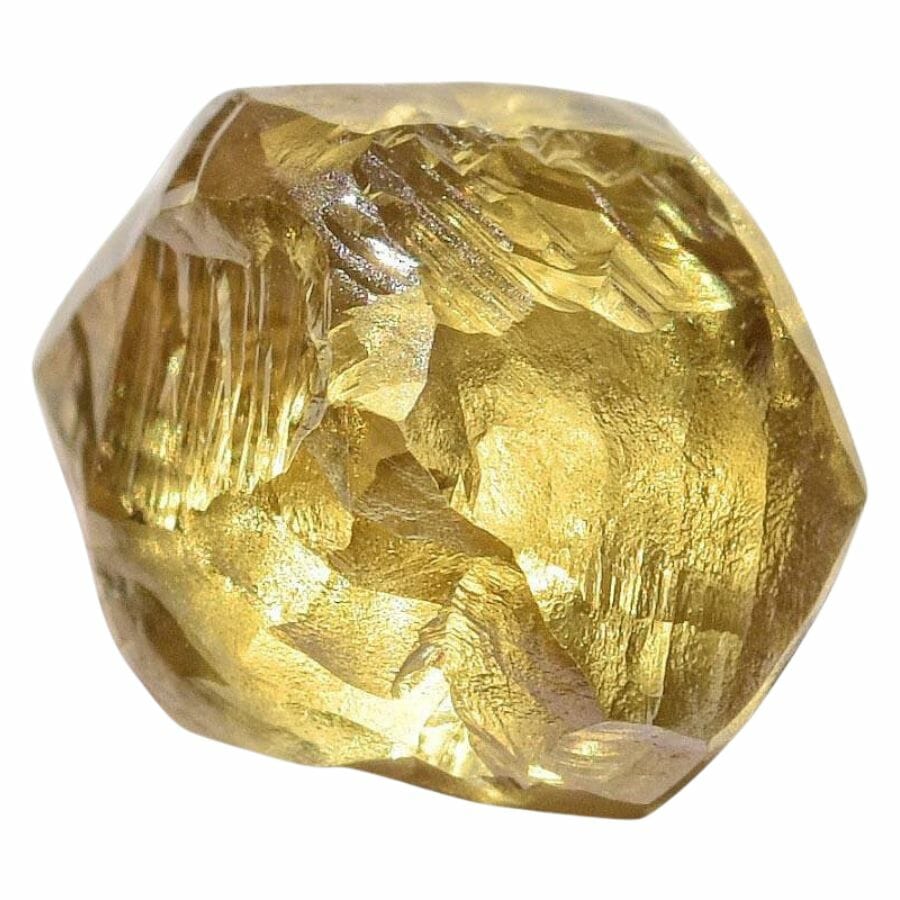
Conductivity is about how well something lets electricity flow through it. And guess what? Diamonds don’t do this well at all.
You see, diamonds are made entirely of carbon atoms linked together in a very tight pattern. Because of this unique structure, diamonds are more like insulators than conductors. This means that they don’t let electricity pass through easily.
Meanwhile, morganite isn’t a good conductor either. Like diamonds, it’s also pretty bad at letting electricity pass through it. The structure and makeup of morganite just don’t make it a good fit for conducting electricity.
The Easiest Ways to Tell Diamond and Morganite Apart
If you’re looking for quick and easy ways to tell them apart without a lot of tools give these a try:
Check the refractive index
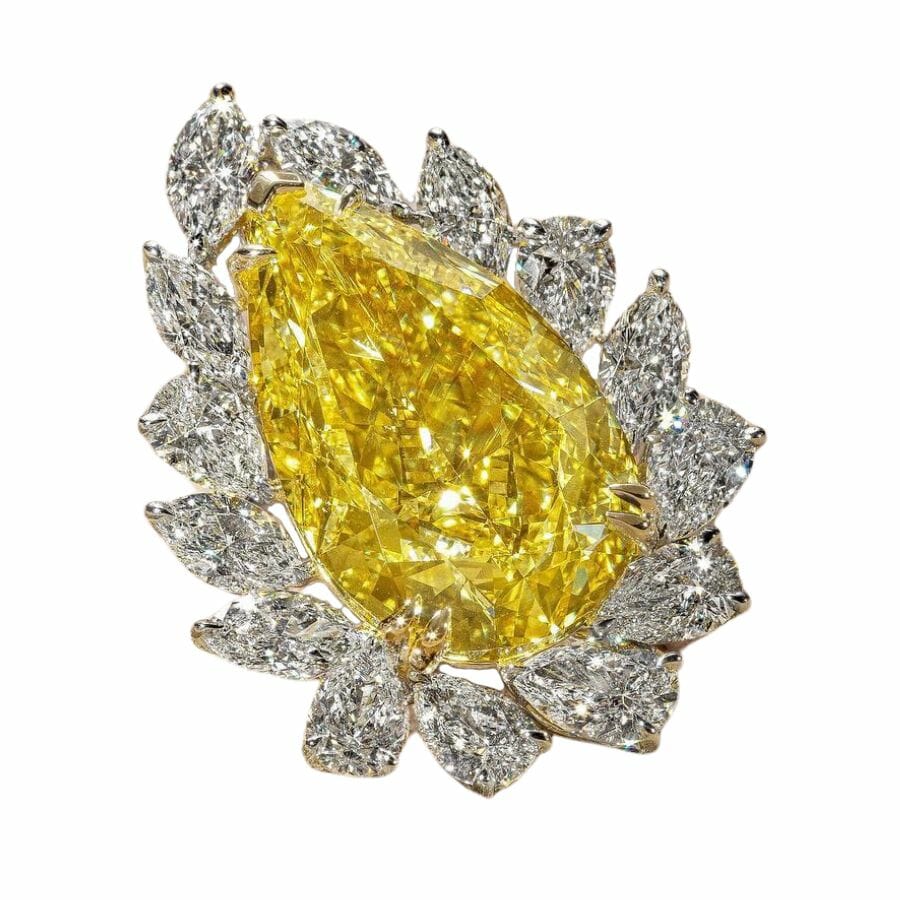
When you’re trying to figure out if a gem is a diamond or morganite, the refractive index can be a big clue. The refractive index is a fancy way of saying how much a gemstone can bend the light that passes through it.
You’ll need a refractometer to test a gem’s refractive index. You might not have one lying around at home, but it’s easy to order one online.
Diamonds have a high refractive index of 2.417 to 2.419, which is part of why they sparkle so much. The light that hits a diamond gets bent or “refracted” a lot, leading to a lot of brilliance. So, if you see a lot of sparkle, you might have a diamond on your hands.
Morganite, however, has a lower refractive index of 1.577 to 1.583. It will still sparkle, but it won’t have the intense brilliance of a diamond. The sparkle will be more soft and subtle.
Test the stone’s hardness with tungsten carbide
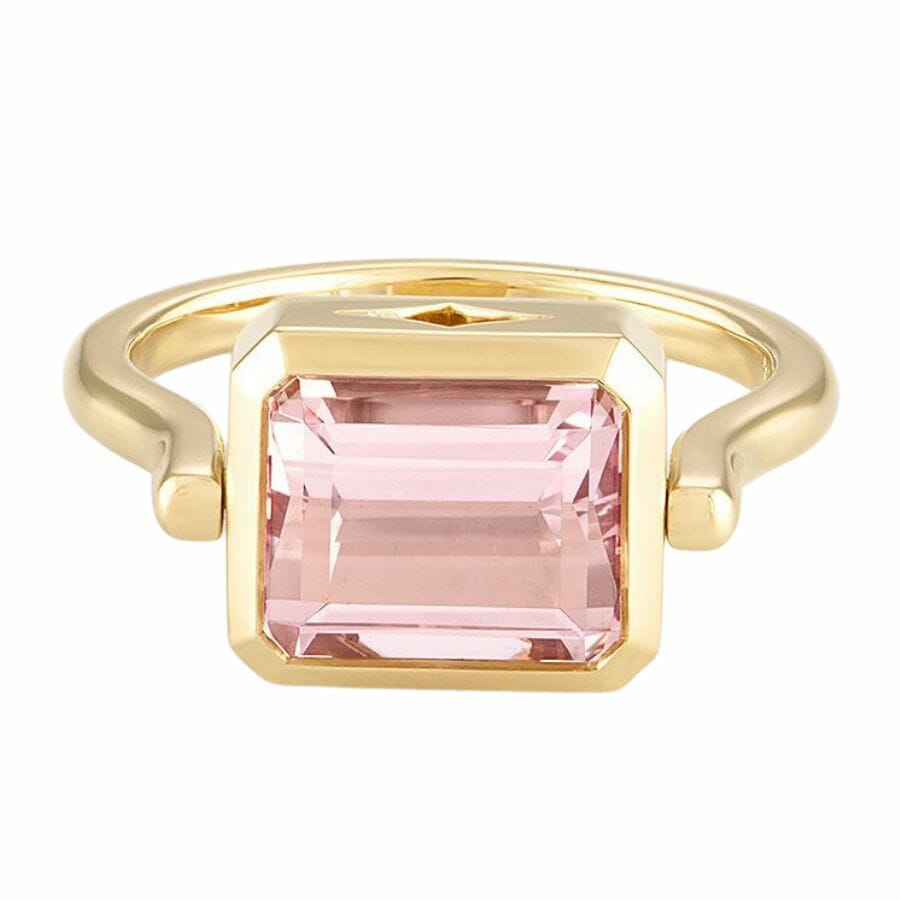
One way to tell if a gem is a diamond or morganite is to try a scratch test. This test involves lightly scratching the stone with a masonry drill bit that has a tungsten carbide tip.
When comparing diamonds vs morganite in terms of hardness, diamonds come out on top with a perfect score on the Mohs scale. Tungsten carbide, meanwhile, has a hardness of 9 on the Mohs scale. This means that it won’t be able to make a mark on a diamond.
Morganite, on the other hand, is softer than tungsten carbide. This means that it can be scratched by a masonry drill bit.
Remember to be very careful if you try this test. It could potentially damage the gemstone, especially if it turns out to be morganite.
Shine a UV light on the gem
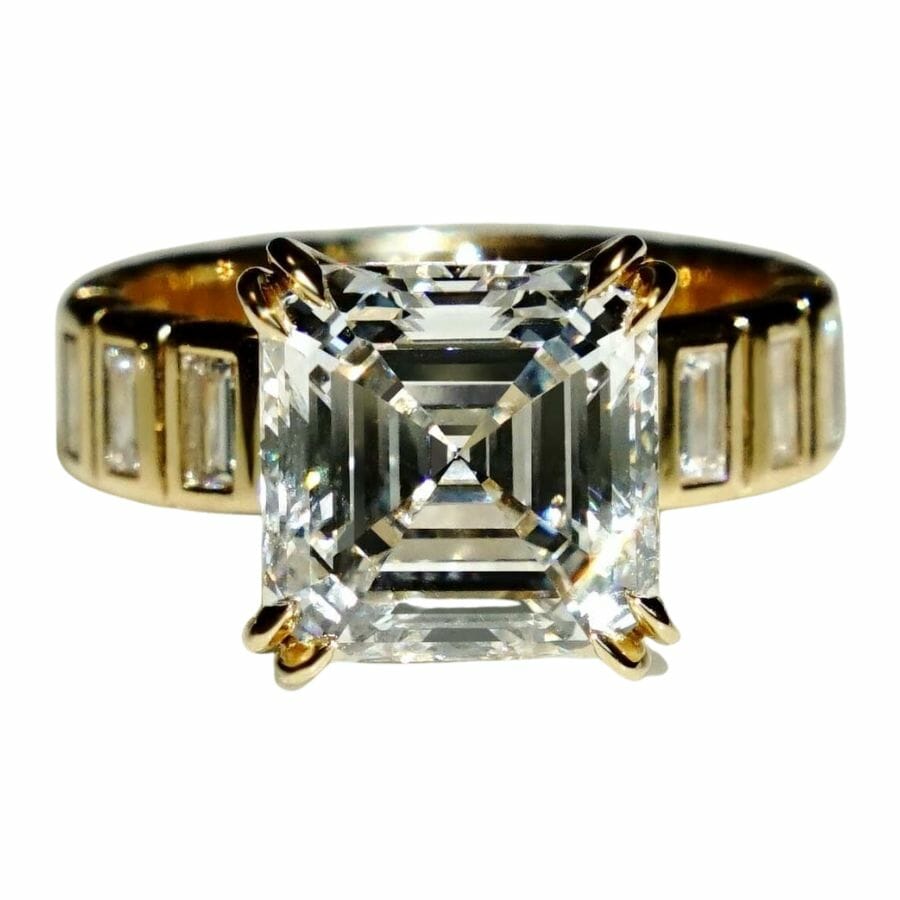
Another method to figure out if a gem is a diamond or morganite is by using UV light to check for fluorescence, which is the glow you see when certain substances are exposed to UV light.
Diamonds often glow blue under UV light, but they can sometimes give off an orange, yellow, white, or green glow. It’s not common, but you might even see a red or purple glow.
On the other hand, when morganite is exposed to UV light, it typically glows a bright, intense red.
By comparing the fluorescence of the gem under UV light, you might be able to tell if it’s a diamond or morganite. Just remember, not all diamonds and morganite will glow under UV light, and some might not glow at all. So this test might not always be definitive. But it can certainly give you a clue.


